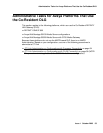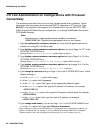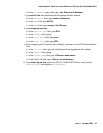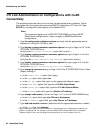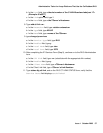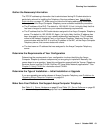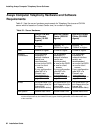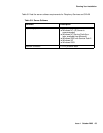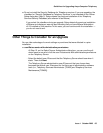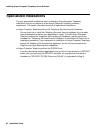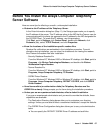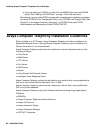
Planning Your Installation
Issue 1 October 2003 61
Gather the Necessary Information
The TCP/IP addressing information that is administered during DLG administration is
particularly relevant to installing the Telephony Services software (see
Task 2: DLG
Administration on page 47). Make sure you have the following addressing information
before you start the Avaya Computer Telephony server software installation procedure.
● The IP address of the DLG. The default is 192.168.25.10, but it is highly likely that this
has been changed to conform to your network addressing requirements.
● The IP address that the DLG administrator assigned to the Avaya Computer Telephony
server. The default is 192.168.25.20. Again, it is highly likely that this IP address has
been changed to conform to your network addressing requirements. This IP address
refers to the Network Interface Card, on the Avaya Computer Telephony Server, that
communicates with the DLG. It is not the IP address of the NIC, on the Avaya Computer
Telephony server, that communicates with clients.
● The host name or IP address that was assigned to the Avaya Computer Telephony
server.
Determine the Requirements of Your Configuration
Determining the requirements of your configuration involves identifying the Avaya
Computer Telephony software components you are going to implement. Basically this
comes down to one question: “does this configuration support both the Tserver (Telephony
Services Server) and the CVLAN (CallVisor PC Local Area Network) applications?" See
Chapter 5:
Using CVLAN for information about CVLAN.
Determine the Type of Installation -- Initial Installation or Upgrade
If you are upgrading an earlier release of Avaya Computer Telephony, see Guidelines for
Upgrading Avaya Computer Telephony on page 64.
Make Sure Your Platform Can Support Avaya Computer Telephony
See Table 3-1: Server Hardware on page 62 and Table 3-2: Server Software on page 63
to make sure that you have the appropriate hardware and software.



